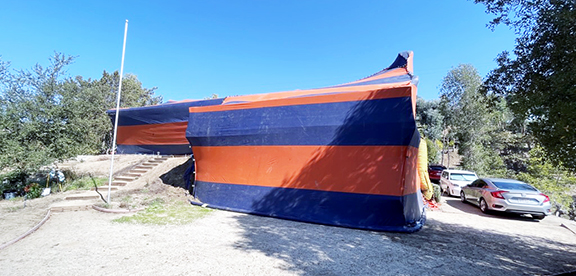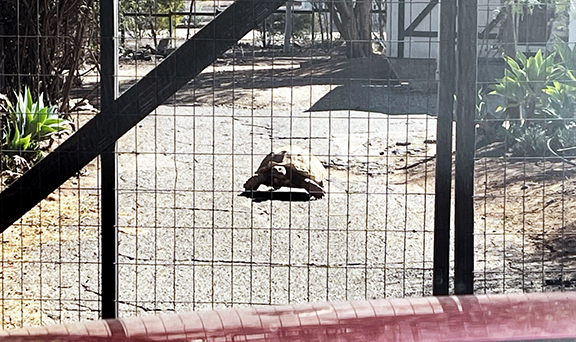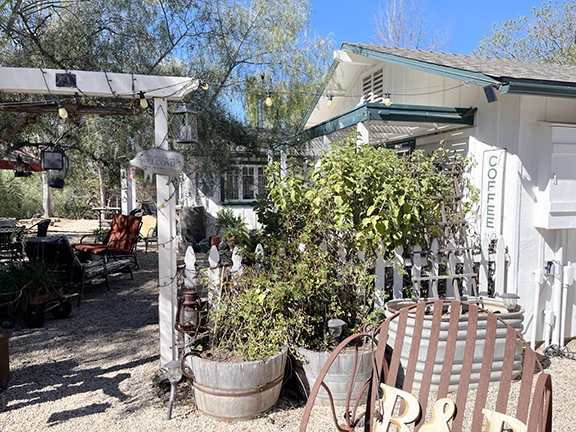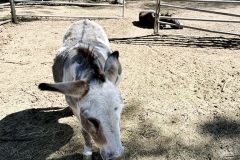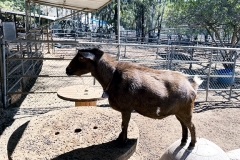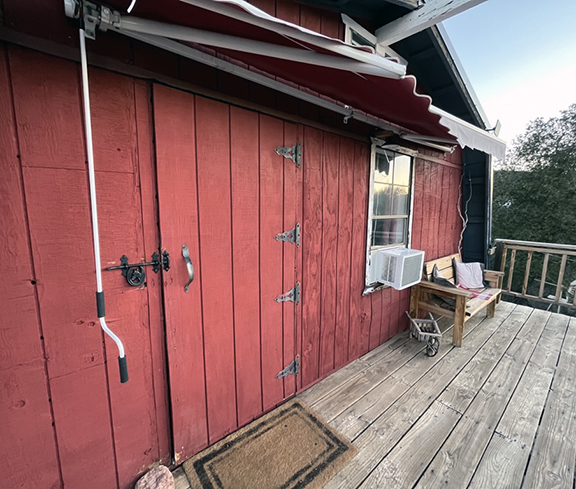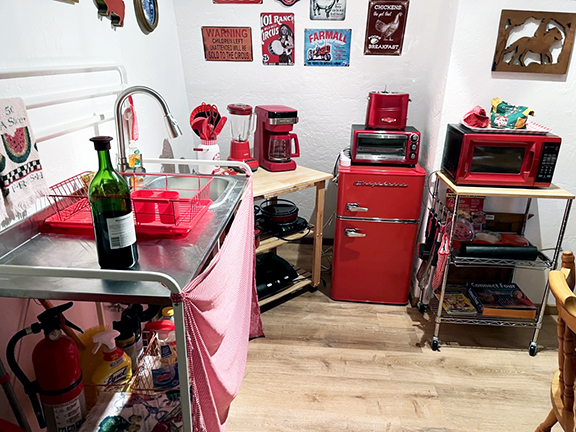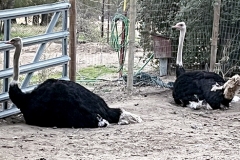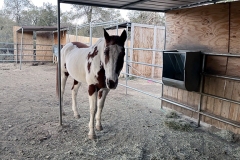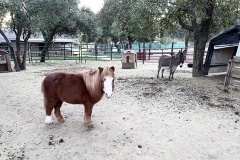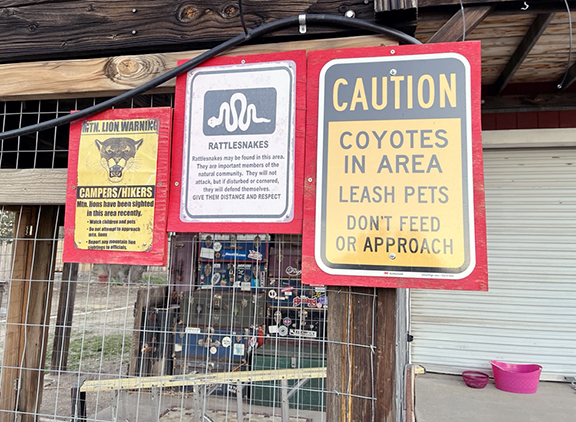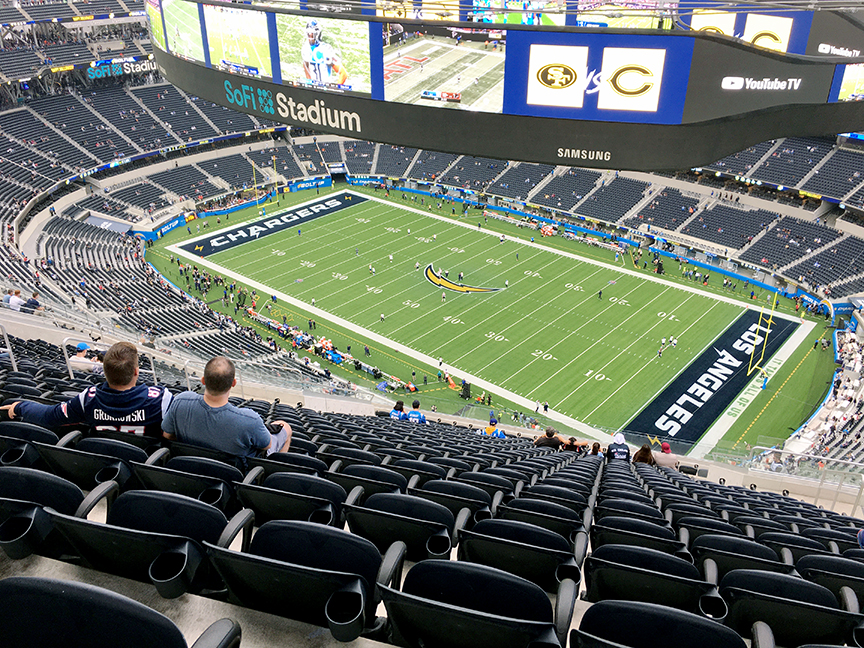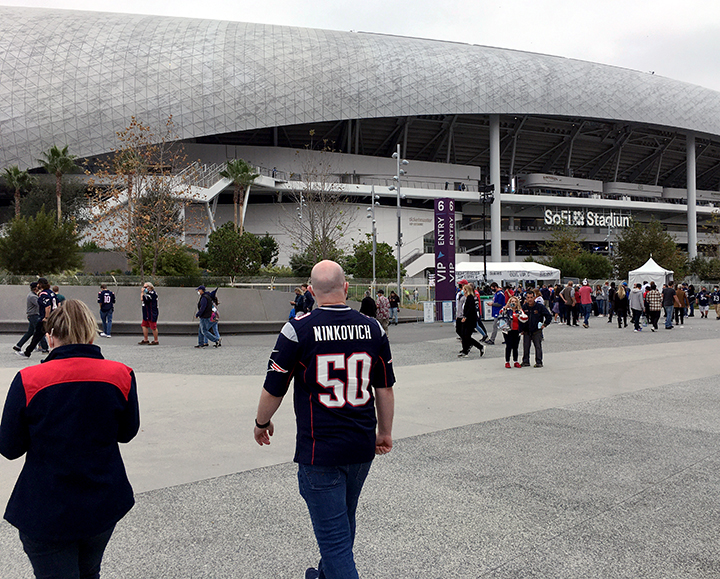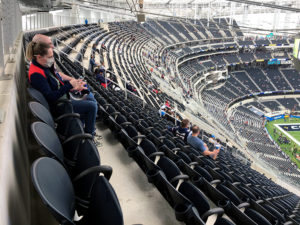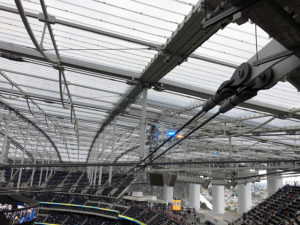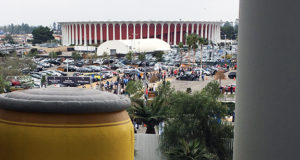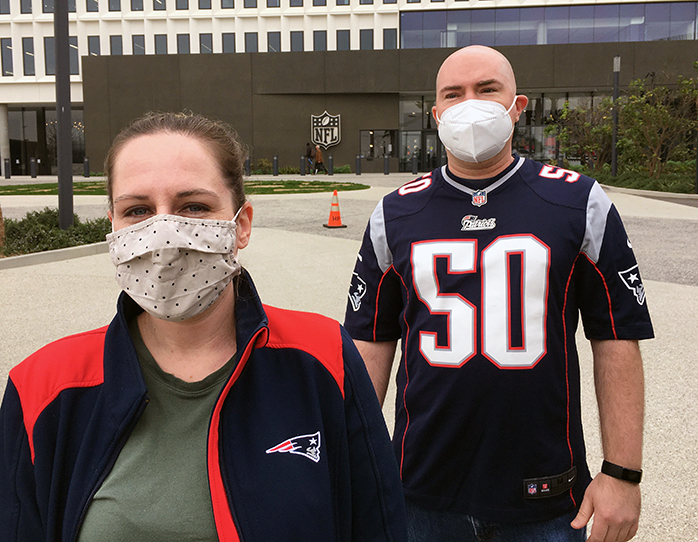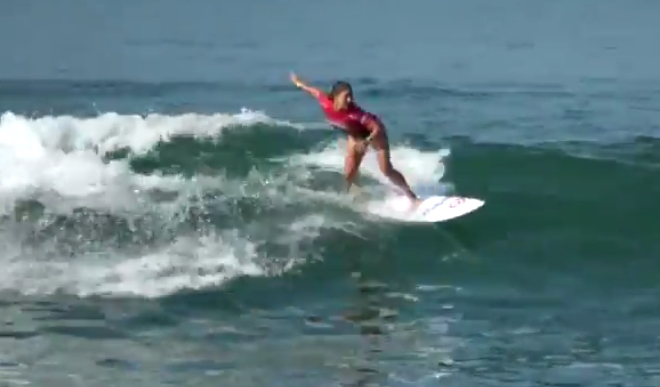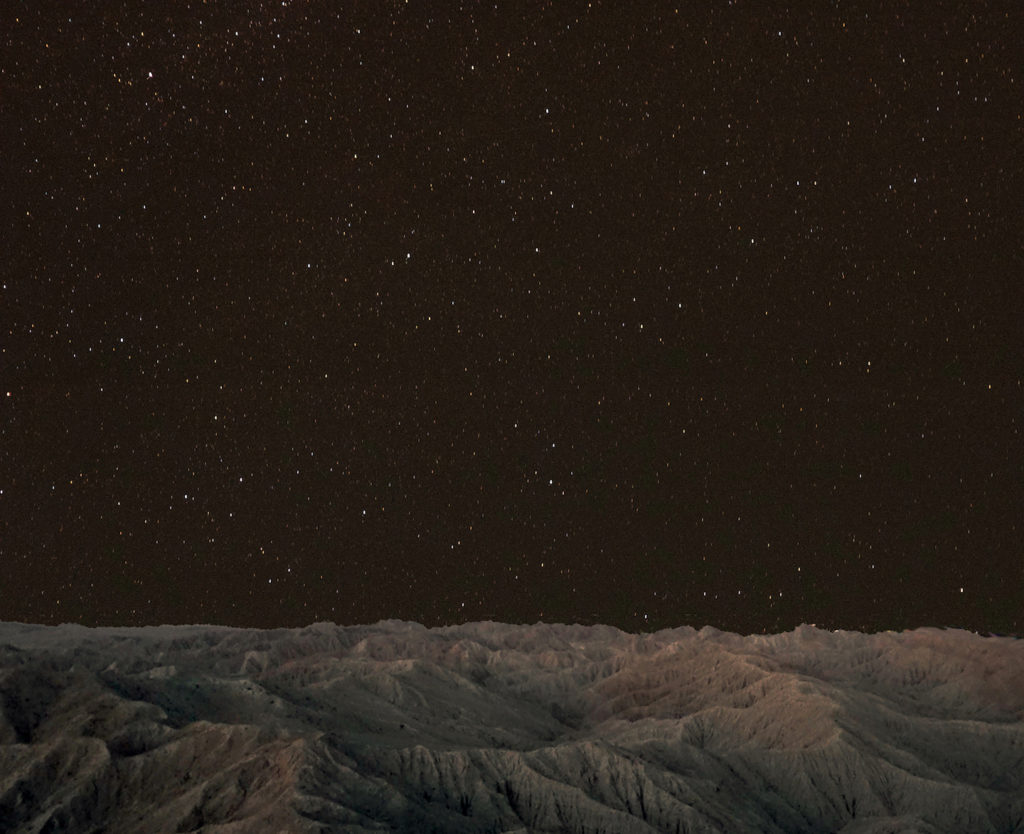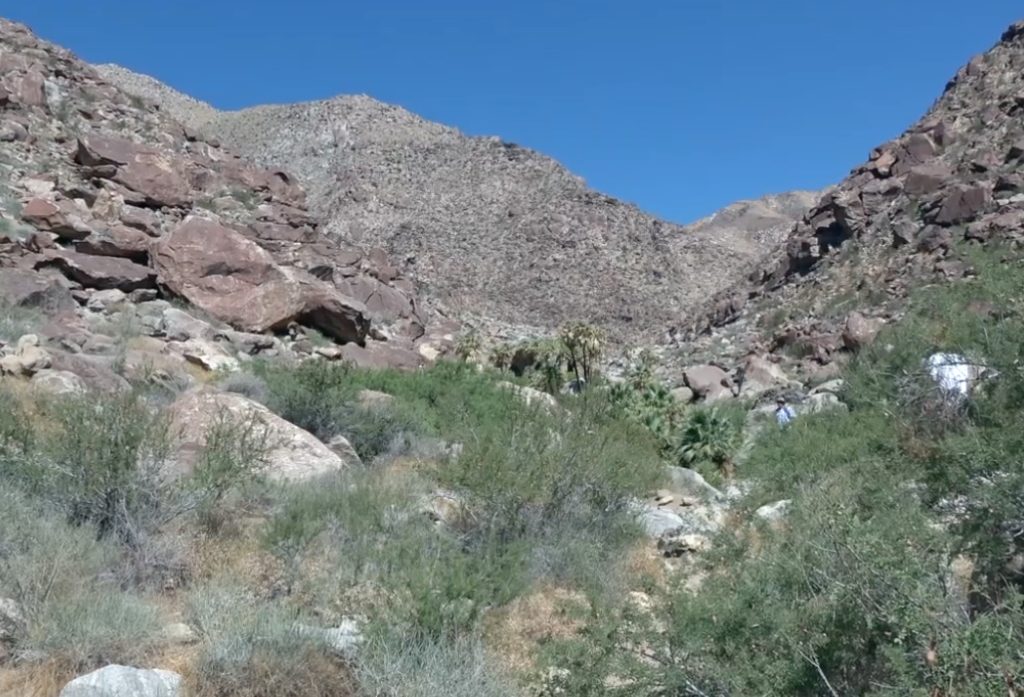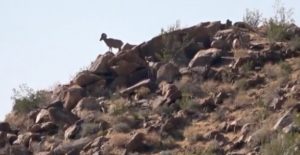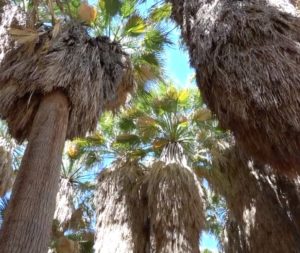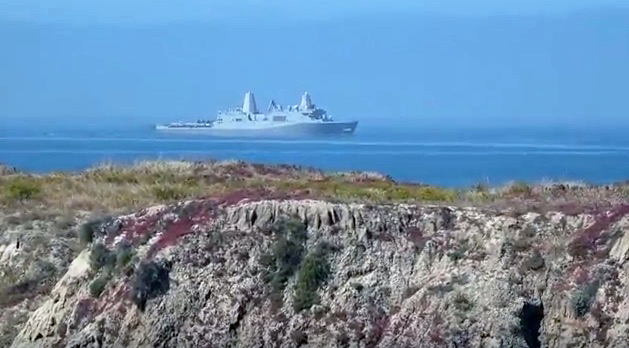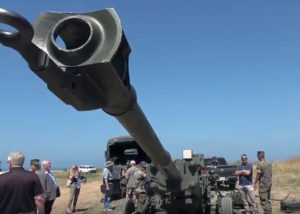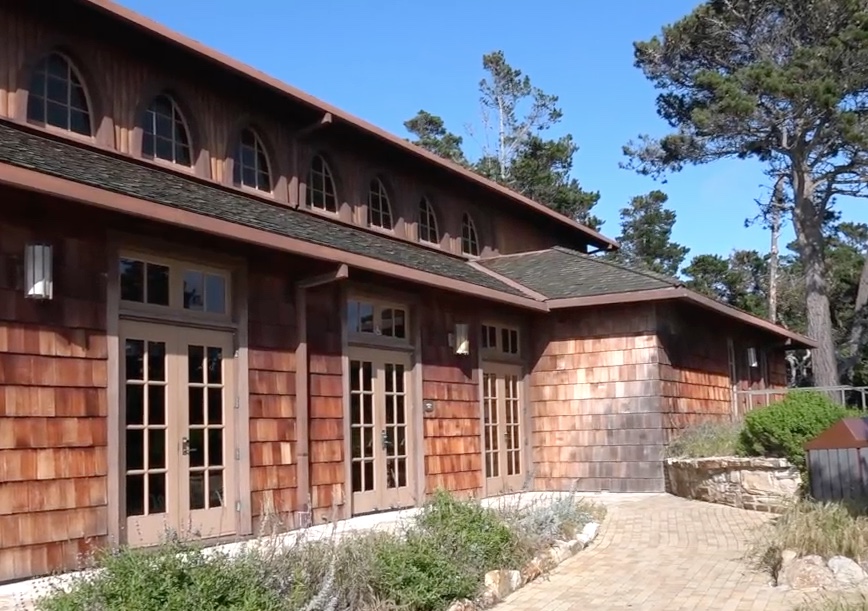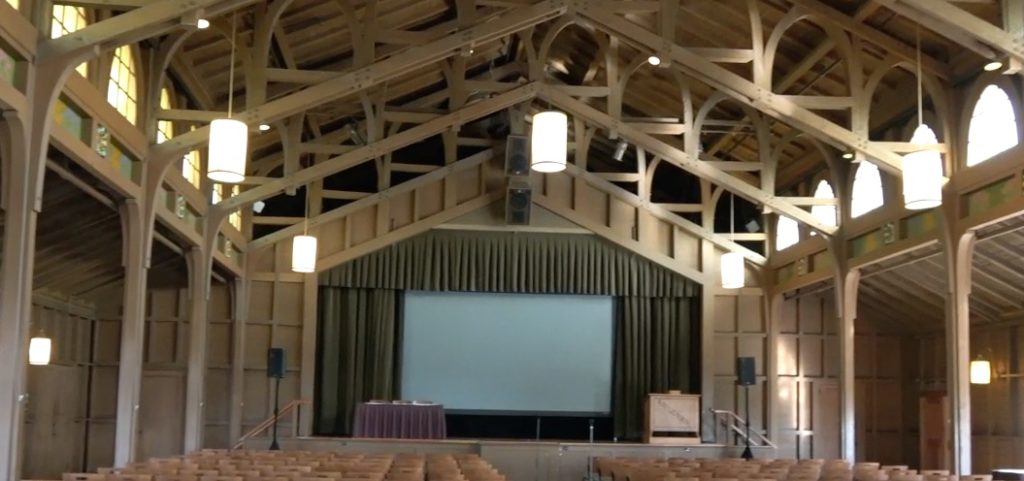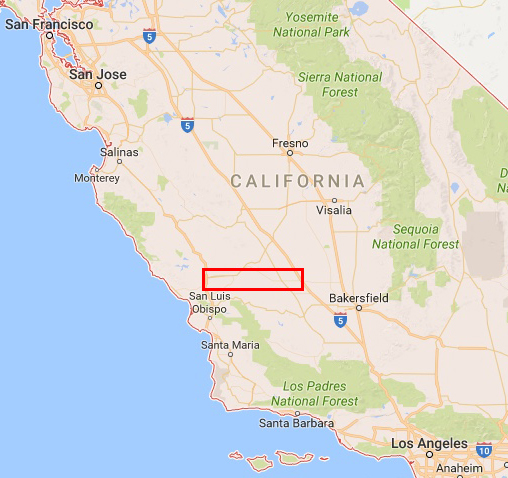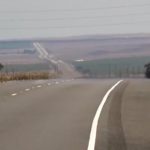In the last two months, I used Airbnb twice. I had never used it previously. They were for practical reasons, not vacation, and the locations were unconventional or, perhaps in some minds, “funky.”
The first location was seven minutes away from my house. With the Andersons on vacation in New England in mid-October, it seemed the right time to have our house fumigated for termites, as had been suggested by pest control firms. That’s the tenting you see, usually on houses going up for sale. For two days and nights, the house would be inaccessible. This was the view when I left.
I chose a place nearby, but not just for location. The site was described as a mini-farm, with various animals about. I texted the owner when I was about to leave and she replied that I should text her when I arrived at the gate, because the tortoise was out. I wasn’t totally sure I was at the correct location until I saw this.
The owner told me the tortoise, King Tut, was the animal that tried most often to escape, and sometimes was successful. Her phone number was painted on his shell.
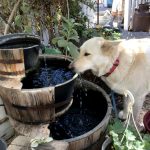
When I was introduced to Pepper, I was told she was “the guests’ dog.” She liked to spend time with visitors, the owner said. Indeed, Pepper spent a lot of time sleeping just outside my door and always greeted me when I arrived at the farm.
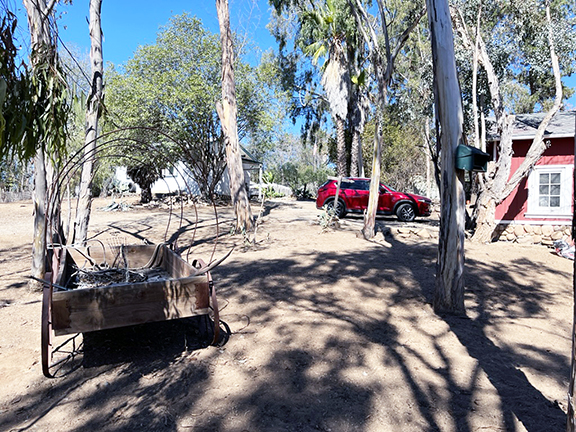
My residence was at right.
Here’s a gallery of other animals on the property.
A few weeks later, Anza-Borrego Foundation held only the second bi-monthly board meeting in person, in Borrego Springs, in nearly three years. To reduce my 90-minute commute to the meeting, I rented an Airbnb closer to Borrego Springs, in the Chihuahua Valley of Warner Springs.
Well, the remote location was “closer,” but it only reduced my drive to 60 minutes. This location was also on a mini-farm and the facility was called “The Barn.” I arrived near sunset, driving the last couple of miles on dirt roads.
Here’s an overhead of the location, with the Airbnb at upper right.
And, indeed, it’s a barn.
The upper level is the living space. And the door is pure barn.
The “kitchen” was spare but functional. I had brought a frozen dinner and was to meet folks for breakfast in Borrego Springs, so the kitchen could be minimal.
Once again, I had farm animals for company. Again, I arrived near sunset and was to leave shortly after sunrise, so I spent a little bit of time checking the animals out before nightfall. Here’s a gallery.
Yes, ostriches.
Also, remote as the site was, more than farm animals are about. Several signs warned renters of potential sources of danger.
Leaving the next morning, I drove several miles almost all downhill before I came to a sign indicating the elevation was 3,000 feet. I guesstimate “The Barn” was at an elevation likely in excess of 4,000 feet. That explains why the morning was so “brisk.”
I found both experiences pleasurable and interesting. I do want to get back to the Chihuahua Valley. The landscape is, to me, magnificent. I hope to take future visitors there, too.
I rated both units 5 stars. Neither was the epitome of luxury and comfort, of course, but that’s not what I wanted anyway. These were relatively inexpensive, comfortable, met all my needs, and provided very interesting experiences.

